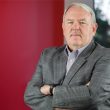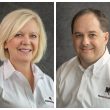In-building codification isn’t easy, but worth the effort
Recently, I wrote a story about the nationwide trend toward codification of in-building coverage for first responders, a task that theoretically has been made easier by the completion earlier this year of international and national codes that provide a blueprint for local government entities to follow. That might be true, but codification still is no walk in the park, according to Chris Baker, a captain with the Roseville (Calif.) Fire Department.
Baker, a member of the Urgent Communications advisory board, knows of what he speaks, having served on the National Fire Protection Association committee that pulled together the national code and working in a municipality that created its own. Both processes taught him several valuable lessons.
The first concerns building size. Originally, the Roseville code applied to structures of 5,000 square feet or more, but that threshold soon proved infeasible, largely because signal failures tend to be proportional to the size of the structure, according to Baker.
“[In-building systems] are a double-edged sword,” he said. “They can improve coverage, but they can also cause a lot of problems, so they need to be managed judiciously. You don’t want to be putting something into a structure the size of a 7-Eleven or a strip mall, because if there’s a coverage problem there, it’s going to be a very small coverage problem.”
The cost of deploying an in-building system was another important factor that led to a re-evaluation of the threshold.
“To do this right, you’re talking about a channelized amplifier, quality parts, and quality engineering, as well as a pre-test and an acceptance test. A building owner could spend $50,000 minimum, which becomes very cost-prohibitive,” Baker said.
“When you look at the value of that, let’s say you’re testing using a 20-grid methodology, which is very common. If you divide a 5,000-square-foot building 20 times, you get to some very small squares. If you fail two squares, you’re asking someone to spend $50,000 to enhance two squares, and that’s not very realistic.” Baker added that the new threshold is 10,000 square feet, which covers critical structures such as shopping malls and hospitals.
Another lesson concerned the type of amplifiers that should be used in an in-building system. Ultimately it was decided that channelized amplifiers should be used instead of broadband amplifiers.
“One of the problems with broadband amplifiers, if you get a cellular site, another SMR licensee or another network … wherever that antenna is pointing, the signal is going to get into that amplifier — and even if the antenna isn’t pointing in that direction — if the signal is strong enough,” Baker said. “The broadband amplifier doesn’t distinguish between licensed signals that you have permission to repeat and ones that you don’t. So, what happens, number one, is that you’re repeating someone’s signal that you’re not allowed to under the [FCC’s] rules and, number two, it robs from your composite power.”
Sometimes, a broadband amplifier will pick up a signal from a nearby source, amplify it, and in the process send it back to the originating system — because that is the direction in which the in-building system’s antenna is pointing — creating unwanted noise for that system.
“That’s not a good thing, and it’s not allowed under the rules,” said Baker, who added that use of a channelized repeater solves all of these problems, because it limits the amount of amplification on channels that are not tuned into the repeater.
Jack Daniel, an in-building system expert who recently spoke on this topic at the Association of Public-Safety Communications Officials (APCO) annual conference, said developers of large structures are unlikely to put up much of a fight when forced to install such in-building systems given the relatively small cost compared with the millions of dollars they’re spending on engineering and construction. Nevertheless, Baker advised that municipalities should anticipate dealing with a great deal of politics when attempting to codify coverage.
“It’s really easy to say that you’re the agency having jurisdiction, and you require it, so it will be,” Baker said. “It doesn’t work that way everywhere. Developers have a presence in the community, and they can appeal things. They certainly can comment on things, especially when the ordinance is over-restrictive. You have to be reasonable.”
Indeed, setting reasonable coverage thresholds is quite a challenge, given the capriciousness of radio as a communications medium, Baker said. “Let’s say –95 dBm [is the threshold,] and a percentage of that is a failure. But are you really out of communication, or are you just below a certain arbitrary standard? It’s really hard to be arbitrary with radio. It depends on the level of your fades, the severity of the fades and how far the fades go,” he said. “It’s really easy to fail a test under certain circumstances and still have adequate radio coverage.”
While he might not want to go through the process again that included some headaches, Baker is glad he participated in both the city of Roseville’s codification and the development of the NFPA’s standard.
“We’re seeing a lot of benefits. The big thing is that we were able to contribute on a national level, because everybody is fighting the same battles,” he said. “It was a lot of work, and it wasn’t easy — but it was well worth it.”
What do you think? Tell us in the comment box below.

















